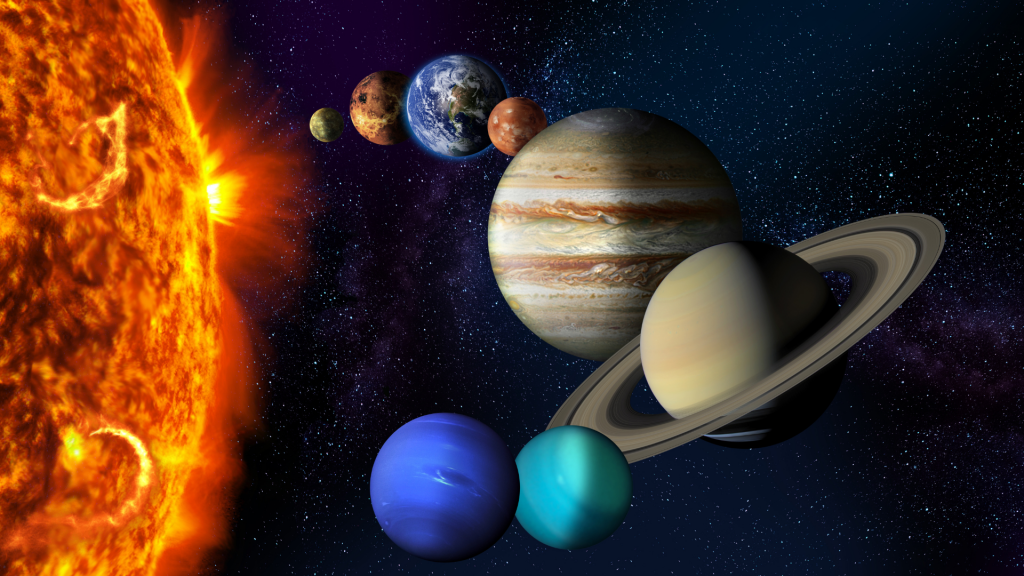
Understanding the Solar System
What Is Solar System
The solar system comprises the sun, planets, dwarf planets, moons, and comets. These planets and dwarf planets, moons, and comets orbit the sun. The sun is the star at the center of our solar system and the largest object in our solar system. This constitutes our Solar System. Among the planets in our solar system is the earth. The earth is rock and metal. The earth is the only place in the entire solar system where humans live. The other planets in our solar system are Mars, Jupiter, Saturn, Uranus, Neptune, and Pluto. The moons and comets make up our little solar system.
Your understanding of the solar system is important for several reasons. It could help you understand how celestial bodies like the sun and the moon affect the climate, weather, and waves in water bodies on our planet. It could also give you an understanding of how geographical landmasses are formed. To know about the myriad landmasses and continents, you could, read encyclopedias, and watch shows such as naturalplanet and others like it. With that knowledge, you may understand the uniqueness of our planet and others as well.
Knowing the planets’ names will help you familiarize yourself with the solar system and identify the planets in casual conversation. Understanding the functions of solar system objects (such as the sun, moon, and earth) will help you better know the earth and its ecosystem. Knowing the solar system objects’ life cycles will help you recognize that all living things grow and evolve.
Why Is It Important To Understand The Solar System?
Learning about the solar system, particularly the eight planets, their moons, asteroids, and comets, is an important topic for adults and children. As our population continues to grow and evolve, it would be unlikely in a hundred years that an encyclopedia would exist on our planet that would cover everything we know. Why keep that knowledge to ourselves? Therefore, it is important to seek out new discoveries continually. Those discoveries and new technologies allow us to understand better and map the solar system.
Understanding how the solar system functions mean you are more likely to consider ways to protect the earth and its natural resources, such as the air, water, and land.
What Can We Learn From The Solar System?
Because our planet is so small, it’s amazing that we are able to explore so much. Our solar system is full of mystery and wonder, and we’ve only scratched the surface of what’s out there. The planets, moons, and asteroids in our solar system hold secrets about the universe’s formation, and we are here to study it.
When the sun first formed, it created our solar system. Since then, our sun has heated planets and asteroids, and comets have travelled through our solar system, crashing into planets and asteroids. The collision of comets with planets and asteroids can speed up the formation of planets, which is why our solar system is so diverse, with such a wide variety of planets, moons, asteroids, and comets. Our solar system is just one example of how amazing our universe is.
What Are 5 Facts About The Solar System?
Planets Are Made of Rock or Gas
Planets are made up of rock, ice, and other stuff, but first, what is a planet? A planet is a celestial body that orbits a star and is massive enough, so gravity is strong enough to keep it from flying off into space. When a star dies, it forms a black hole, which sucks everything in. Planets form like baby comets that crash into nearby stars, then grow to the size of the earth.
Asteroids In Between Mars & Jupiter
Did you know that there are over 100 times more asteroids in our solar system than there are planets? And there are more asteroids between Mars and Jupiter than between Mars and the sun? The solar system is huge, and it’s easy to forget that it’s the largest system in the entire universe. It’s an amazing place, and you can learn these fun facts about the solar system, and others, by reading this infographic.
Sunlight Takes Around 8 Minutes To Reach Earth
The sun is the centre of our solar system, and its light takes eight minutes to reach earth. The rest of the solar system, versus the earth, moves around the sun at incredible speeds. The planets, moons, asteroids, comets, and dwarf planets in our solar system rotate around planets and at their orbital speeds.
Solar System 2 Light-years Across
The planets revolve around the sun, one of our star’s six planets. (Sit back, relax, and breathe-you’re not going to die.) But have you ever wondered just how large that is? Well, in astronomical terms, our solar system is 2 light-years across.
One Year Different On Each Planet
Mercury takes 88 days to complete its full orbit, while Neptune’s annual trek is 165 years. The closer the planet is to the sun, the quicker is its annual orbit around our star, whereas the earth takes one year to revolve around the sun.



